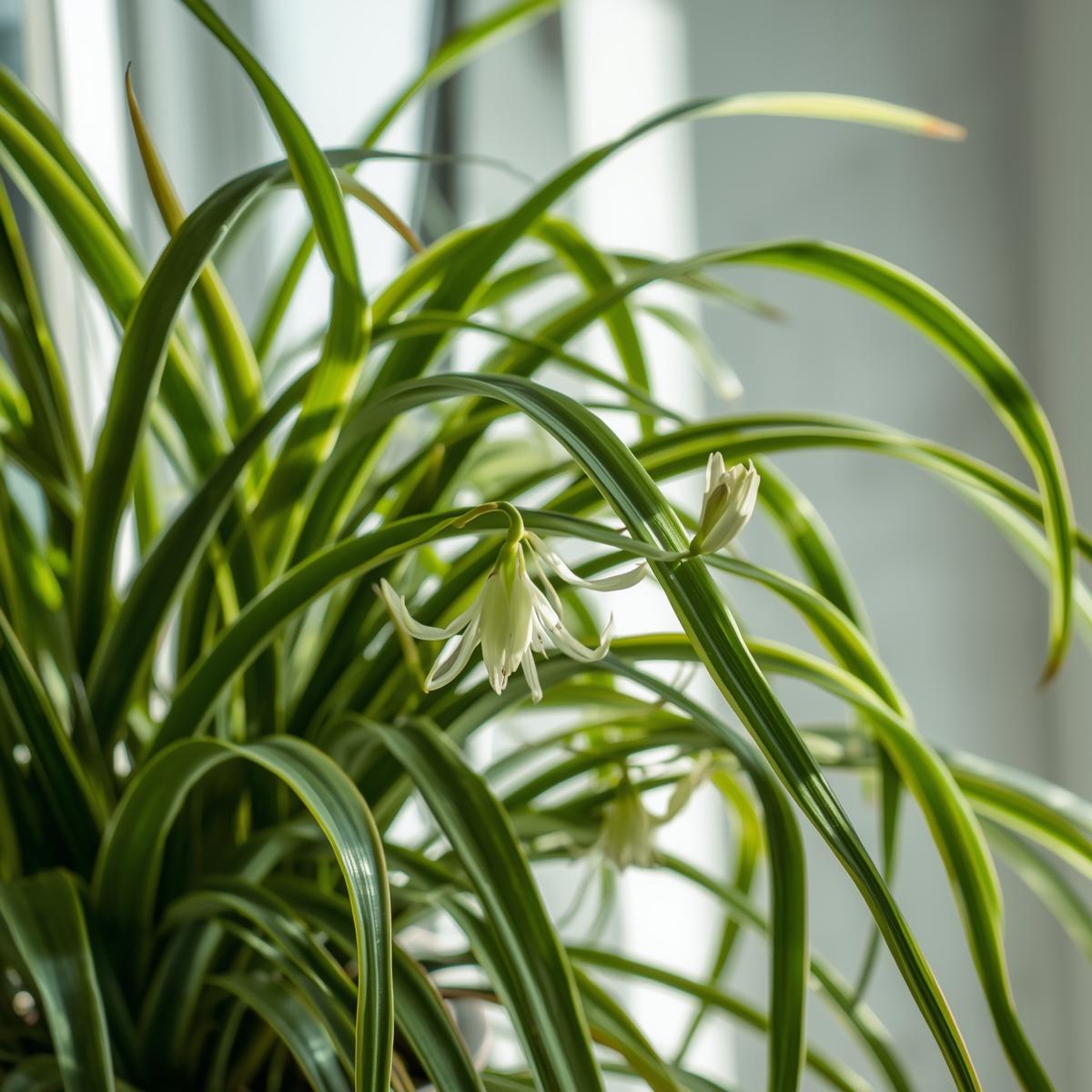The ultimate guide to growing, nurturing, and enjoying one of the easiest—and prettiest—houseplants around!If you’re looking for a low-maintenance, air-purifying houseplant that adds a lush, tropical touch to your home, the spider plant (Chlorophytum comosum) is a perfect choice. Known for its long, arching leaves and adorable baby “spiderettes,” this plant is beginner-friendly, resilient, and incredibly rewarding to grow.In this guide, you’ll discover how to care for a spider plant, from sunlight and watering to propagation and problem-solving — so you can keep your plant thriving all year long!🌿 Why Everyone Loves Spider PlantsSpider plants are one of the most popular indoor plants across the United States, the United Kingdom, and Canada — and for good reason!Here’s what makes them special:🌱 Beginner-friendly: They’re nearly impossible to kill.💧 Low water needs: Perfect for busy plant lovers.🌬️ Air-purifying: NASA studies show they remove indoor toxins.🌞 Adaptable: Thrives in various light conditions.🌼 Multiplying magic: Produces “baby” spiderettes you can replant easily.If you want a plant that looks great and asks for very little, the spider plant is your new green best friend.🌤️ Ideal Light ConditionsOne of the keys to learning how to care for a spider plant is understanding its light preferences.✅ Best Light:Bright, indirect light — near an east or west-facing window.Too much direct sunlight can scorch the leaves.💡 Can Tolerate:Low light areas (though growth may slow down).Artificial lighting, making it great for offices or darker rooms.Pro tip: Rotate your spider plant every few weeks to promote even growth.💧 Watering Tips for a Healthy Spider PlantOverwatering is the number one mistake plant parents make!Here’s the best watering routine:Water once every 7–10 days, depending on your climate.Allow the top inch of soil to dry out before watering again.Always empty excess water from the saucer to prevent root rot.If you live in a region with hard tap water (common in parts of Canada and the UK), consider using filtered or distilled water. Spider plants can be sensitive to fluoride and chlorine, which may cause brown leaf tips.🪴 Choosing the Right Soil and PotHealthy roots mean a happy spider plant!Soil:Use a well-draining potting mix — standard houseplant soil works perfectly.For extra drainage, add a bit of perlite or coarse sand.Pot:Choose a pot with drainage holes to prevent soggy roots.Terracotta pots are ideal because they allow the soil to breathe.Repot every 1–2 years, or when roots start growing out of the drainage holes.🌸 Feeding Your Spider PlantFeed your plant for stronger leaves and more vibrant growth:Use a balanced liquid fertilizer (10-10-10) once a month during spring and summer.Skip feeding in fall and winter, when growth naturally slows down.Avoid over-fertilizing — it can lead to salt buildup and brown tips.🌱 Propagation: Grow New Spider Plants!One of the most fun parts of spider plant care is propagation. Those adorable hanging baby plants, or “spiderettes,” can grow into brand-new plants with minimal effort.Here’s how to do it:Wait until baby spiderettes have small roots.Cut them off using clean scissors.Place the cuttings in a glass of water or moist soil.Once roots develop (in 1–2 weeks), pot them in fresh soil.Soon, you’ll have new spider plants to share with friends — or decorate every room in your home!🌬️ Temperature & HumiditySpider plants thrive in most indoor environments, but they have preferences:Ideal temperature: 65°F–80°F (18°C–27°C).Avoid cold drafts or temperatures below 50°F (10°C).Moderate humidity is fine, but a light misting helps in dry winters (especially in central-heated homes in Canada or the UK).🍃 Common Spider Plant Problems (and Fixes)Even the easiest plants can have hiccups — but don’t worry, here’s how to fix them:🟤 Brown Leaf TipsCause: Hard water, over-fertilizing, or dry air.Fix: Use filtered water, reduce fertilizer, and mist occasionally.🟢 Pale LeavesCause: Too little light or nutrient deficiency.Fix: Move to a brighter spot and feed monthly.🪰 Fungus GnatsCause: Overwatering and damp soil.Fix: Let soil dry out and use sticky traps if needed.🧡 Limp or Yellow LeavesCause: Waterlogged roots or compacted soil.Fix: Check drainage and repot if necessary.🌼 Styling Ideas for Spider PlantsSpider plants aren’t just easy to care for — they’re stunning decor accents!✨ Hanging Baskets — Show off the arching leaves and spiderettes.🪴 Shelf Displays — Combine with other houseplants for a lush look.🌿 Bathroom Decor — Loves the humidity from showers!🌞 Windowsills — Ideal for indirect light and easy growth.🌸 Seasonal Spider Plant CareSpring & Summer:Active growth season — water and fertilize regularly.Perfect time for repotting and propagation.Fall & Winter:Growth slows down — water less often.Keep away from cold windows or heating vents.💚 Conclusion: The Joy of Spider Plant CareLearning how to care for a spider plant is one of the easiest and most rewarding ways to start your houseplant journey. With just a bit of light, occasional watering, and minimal attention, you’ll enjoy a lush, green plant that purifies your air and adds natural beauty to your home.So, if you haven’t already — bring one home and discover why this is a must-try plant for every gardener and plant lover! 🌿✨

